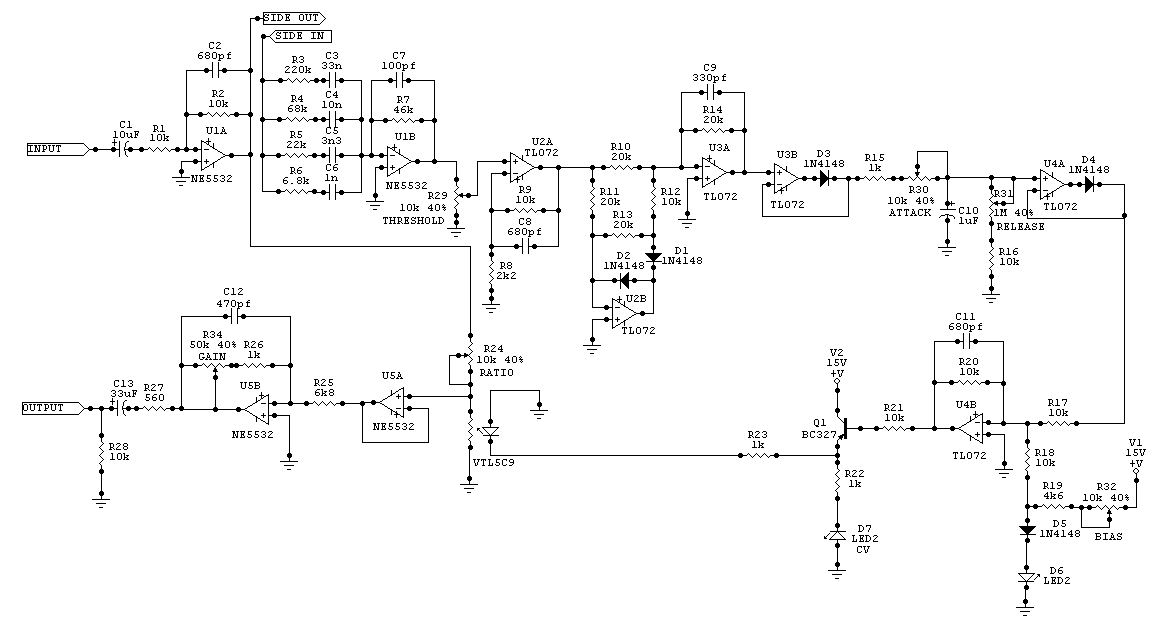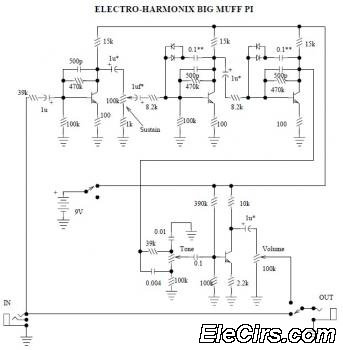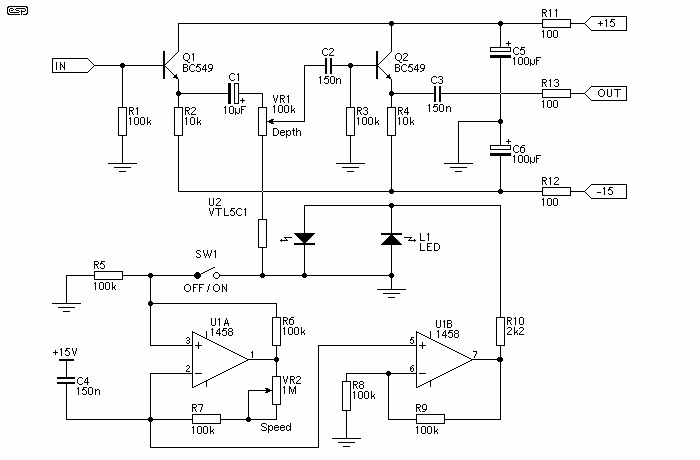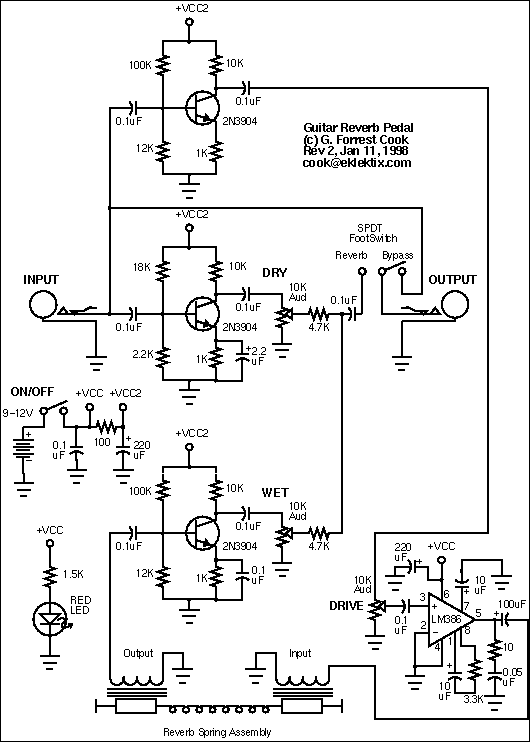
Bass Guitar Compressor
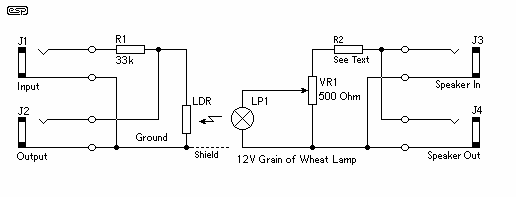
The project described here is one that you can just build and have working straight away although it is entirely possible that you will want to experiment a bit, and requires only a small handful of parts. In its simplest form, there are no active electronics at all - and this is exactly what is described.
In case you were wondering, it can also be used with guitar, and can give excellent sustain, although this circuit is too slow to give perfect results. More: The unit described here uses a light dependent resistor (LDR) and a small light globe, of the type commonly referred to as a "grain of wheat". These are very small, and having a small filament, they react quite quickly to an applied signal.
The circuit described is a simple optical audio effect that utilizes a light-dependent resistor (LDR) in conjunction with a light source, specifically a "grain of wheat" bulb. The LDR serves as a variable resistor that changes its resistance based on the intensity of light falling on it. In this application, when the light from the bulb varies, the resistance of the LDR changes correspondingly, which can be used to modulate an audio signal.
The basic configuration includes the LDR connected in series with a resistor to form a voltage divider. The output voltage from this divider can be taken to an audio processing circuit or directly to a guitar amplifier. The light bulb is driven by an audio signal, causing it to flicker in response to the audio waveform. This flickering light alters the resistance of the LDR, which in turn modifies the audio signal based on the light intensity.
This circuit is particularly effective for creating sustain effects in electric guitars, as the gradual changes in light intensity can lead to a smooth modulation of the audio signal. However, it is important to note that the response time of the circuit is limited by the physical properties of the LDR and the light bulb, which may not provide instantaneous results, thus affecting the precision of the effect.
To enhance the circuit's performance, additional components such as capacitors could be included to filter the output signal, or an operational amplifier could be utilized for better signal conditioning. Overall, this simple design allows for experimentation and modification, making it an excellent project for both beginners and those looking to explore optical audio effects.The project described here is one that you can just build and have working straight away (although it is entirely possible that you will want to experiment a bit), and requires only a small handful of parts. In its simplest form, there are no active electronics at all - and this is exactly what is described.
In case you were wondering, it can also be used with guitar, and can give excellent sustain, although this circuit is too slow to give perfect results. The unit described here uses a light dependent resistor (LDR) and a small light globe, of the type commonly referred to as a "grain of wheat". These are very small, and having a small filament, they react quite quickly to an applied signal. LD 🔗 External reference
In case you were wondering, it can also be used with guitar, and can give excellent sustain, although this circuit is too slow to give perfect results. More: The unit described here uses a light dependent resistor (LDR) and a small light globe, of the type commonly referred to as a "grain of wheat". These are very small, and having a small filament, they react quite quickly to an applied signal.
The circuit described is a simple optical audio effect that utilizes a light-dependent resistor (LDR) in conjunction with a light source, specifically a "grain of wheat" bulb. The LDR serves as a variable resistor that changes its resistance based on the intensity of light falling on it. In this application, when the light from the bulb varies, the resistance of the LDR changes correspondingly, which can be used to modulate an audio signal.
The basic configuration includes the LDR connected in series with a resistor to form a voltage divider. The output voltage from this divider can be taken to an audio processing circuit or directly to a guitar amplifier. The light bulb is driven by an audio signal, causing it to flicker in response to the audio waveform. This flickering light alters the resistance of the LDR, which in turn modifies the audio signal based on the light intensity.
This circuit is particularly effective for creating sustain effects in electric guitars, as the gradual changes in light intensity can lead to a smooth modulation of the audio signal. However, it is important to note that the response time of the circuit is limited by the physical properties of the LDR and the light bulb, which may not provide instantaneous results, thus affecting the precision of the effect.
To enhance the circuit's performance, additional components such as capacitors could be included to filter the output signal, or an operational amplifier could be utilized for better signal conditioning. Overall, this simple design allows for experimentation and modification, making it an excellent project for both beginners and those looking to explore optical audio effects.The project described here is one that you can just build and have working straight away (although it is entirely possible that you will want to experiment a bit), and requires only a small handful of parts. In its simplest form, there are no active electronics at all - and this is exactly what is described.
In case you were wondering, it can also be used with guitar, and can give excellent sustain, although this circuit is too slow to give perfect results. The unit described here uses a light dependent resistor (LDR) and a small light globe, of the type commonly referred to as a "grain of wheat". These are very small, and having a small filament, they react quite quickly to an applied signal. LD 🔗 External reference

